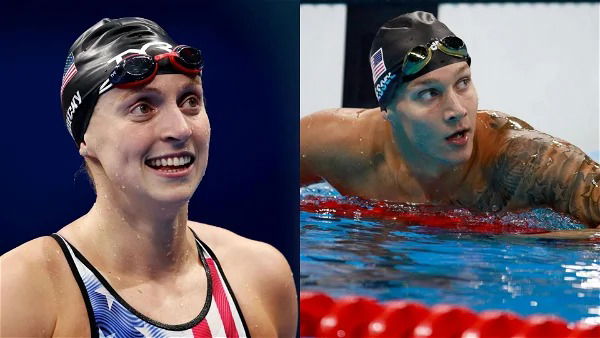
Imago
Katie Ledecky and Caeleb Dressel

Imago
Katie Ledecky and Caeleb Dressel
At every family gathering, the old adage “Thou art as thou dost partake” reverberates across the dinner table, a timeless reminder that you become what you eat. In the quest to become a champion, it’s not just about consuming food, but feasting like a victor. The essence of this proverb isn’t merely in its recitation but in the unwavering discipline, it demands in daily life. The culinary habits of champions offer a revealing glimpse into the makings of greatness. Who better to exemplify this than two titans of the pool, Katie Ledecky and Caeleb Dressel?
Watch What’s Trending Now!
Katie Ledecky, an undeniable force in the swimming world, has earned accolades both in and out of the pool. A recipient of the prestigious Presidential Medal of Freedom, she stands as the second youngest athlete to receive this esteemed honor. Ledecky’s love for music is evident in her enjoyment of playing the piano in her free time. Her commitment to the sport is further demonstrated by her role as a volunteer assistant swimming coach at the University of Florida, where she mentors and inspires the next generation of swimming talent. The secret to her neverending source of energy? A staunchly protein-packed diet that fuels her relentless pursuit of excellence.
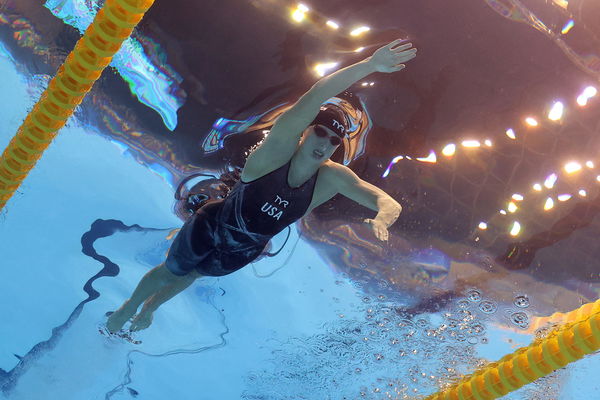
Getty
FUKUOKA, JAPAN – JULY 25: (EDITORS NOTE: Image taken using an underwater remote camera.) Katie Ledecky of Team United States competes in the Women’s 1500m Freestyle Final on day three of the Fukuoka 2023 World Aquatics Championships at Marine Messe Fukuoka Hall A on July 25, 2023 in Fukuoka, Japan. (Photo by Clive Rose/Getty Images)
On the flip side, Caeleb Dressel, a virtuoso in freestyle and butterfly, has painted his path to glory with an eclectic palette. Raised without the distractions of cable television, his childhood was filled with outdoor adventures, fostering a deep appreciation for nature and balance. He honed his swimming skills alongside fellow Olympian Ryan Murphy, playfully chasing and often surpassing his friend’s records. This spirit of playful competition and camaraderie laid the foundation for Dressel’s future triumphs. Even today, Dressel’s loyal black lab, Jane, accompanies him everywhere, a reminder of the importance of companionship and unconditional love in his life. Dressel’s unique blend of discipline and indulgence is also reflected in his diet, which includes freshly grown organic foods interspersed with treats like Happy Cola gummies, Peanut Butter Reese’s, and Hot Tamales. Could this unconventional diet be the secret ingredient fueling his phenomenal success in the pool?
ADVERTISEMENT
The dietary dichotomy between Ledecky’s disciplined regime and Dressel’s balanced indulgence poses an intriguing question: What is the recipe for Olympic gold? Is it a stringent adherence to protein, a balanced embrace of pleasure, or a personal formula unique to each champion? The diets that shape legends are varied and complex, and the path to Olympic glory is perhaps as diverse as the athletes who pursue it.
ADVERTISEMENT
A sneak peek into Katie Ledecky and Caeleb Dressel’s gold medal diets
Katie Ledecky’s day begins in the pre-dawn hours, between 5 and 5:30 a.m., setting the stage for a breakfast designed to fuel champions. Her choice? Oatmeal, enriched with peanut butter and banana, is a meal that provides a powerful blend of fiber and protein to energize her rigorous morning swim practices. As midday approaches, Ledecky keeps lunch straightforward yet nutrient-packed, often opting for eggs with toast enhanced with spinach or tomatoes to boost nutrient intake crucial for muscle control and cognitive function. But fueling her body doesn’t end there, as Ledecky’s post-practice nutrition is meticulously planned.
Post-afternoon practice, as she heads home, a chocolate Core Power protein shake becomes her recovery elixir, loaded with protein and electrolytes essential for recuperation during Olympic trials preparations. Dinner diversifies with options like chicken, steak, or salmon, accompanied by vegetables or rice—a balanced plate ensuring a robust intake of proteins, carbohydrates, and essential nutrients. Her snack preference leans towards hydrating, fiber-rich berries, underscoring her diet’s alignment with her high athletic demands yet adapting to individual health goals and activity levels. Ledecky’s diet, as listed, clearly seems well structured, but how does another Olympic champion approach their nutrition?
ADVERTISEMENT

ADVERTISEMENT
In contrast, Caeleb Dressel’s dietary regimen is deeply rooted in sustainability and self-sufficiency, with about 90% of his intake coming from wholesome foods produced on his own farm. This connection to his food source is palpable, as he and his wife engage in raising chickens and butchering cattle, enriching the quality of their meals. Their garden yields a bounty of vegetables and herbs, integrating freshness and flavor into every dish. Dressel’s day starts with farm-fresh eggs, complemented by berries and toast drizzled with family-sourced honey. Dressel’s commitment to wholesome, homegrown food is evident, but is there any more room for indulgence in a champion’s diet?
Top Stories
Another Almost Fatal Disaster Surfaces From Statesville Airport Amidst Ongoing Greg Biffle’s Crash Investigation

Prayers Pour In From Terrell Owens as 275lbs Former Cowboys Player Announces Major Health News
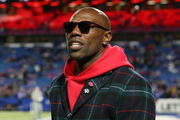
Tiger Woods & Charlie Woods Paid Special Homage by Annika Sorenstam’s Son at PNC Championship
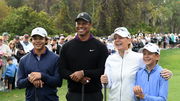
NTSB Appeals for Greg Biffle’s Wife’s Alleged In-Flight Text Messages as Crash Investigation Heats Up

Josh Allen Makes Lifetime Buffalo Announcement as Pregnant Hailee Steinfeld Receives Bills QB’s Clear Family Plan

Travis Kelce Reveals Real Reason Behind Decision to Snub the Media Amid Retirement Rumors

His lunch remains light, accommodating intense afternoon training sessions, while dinner is a heartier affair, often featuring seafood or farm-raised meat, prepared with familial recipes. Despite his predominantly clean diet, Dressel indulges in sweets and fast foods like candy, pizza, and cheeseburgers occasionally, emphasizing moderation to preserve both physical and mental well-being. So there, you have it – two Olympic champions, two distinct approaches to nutrition, yet a common thread may unite their seemingly divergent dietary choices.
Comparing their diets, both Ledecky and Dressel exhibit a keen focus on high-quality, nutrient-rich foods tailored to their athletic needs, yet their approaches diverge significantly. Ledecky’s diet is meticulously structured, focusing on complete proteins and key nutrients to support both physical and cognitive functions. Dressel, however, emphasizes a holistic, sustainable lifestyle, blending rigorous dietary discipline with periodic indulgences, underscoring a balanced approach to nutrition and mental health. Their diets reflect not only their commitment to their sports but also their philosophies toward food, health, and sustainability.
ADVERTISEMENT
Unique Nutritional Requirements for Women Swimmers: How They Differ from Men’s
Navigating the nutritional waters for female swimmers is like charting a course through unexplored oceans. Unlike their male counterparts, female athletes must sail through a sea of unique physiological and hormonal challenges that are often ignored in the broader ocean of sports nutrition research. This oversight has left many female swimmers charting their own courses with limited maps in hand due to the sparse data specifically tailored to their needs.
Consider the dynamic waters of the menstrual cycle. This isn’t just a monthly inconvenience; it’s a cyclical wave of varying nutritional demands crashing into the routines of elite athletes. Iron, a critical nutrient lost in the tide of menstrual blood, becomes a lighthouse beacon of focus. Without enough iron, female swimmers could find themselves navigating the fog of fatigue and anemia, drifting away from peak performance. The dietary islands rich in iron—think leafy greens, lean meats, and fortified cereals—become crucial ports of call, often visited with a splash of vitamin C to aid absorption. But the journey doesn’t end there. Caloric intake, the fuel that powers these athletes, demands careful consideration. For female swimmers, overly restrictive calorie counting can lead to treacherous waters, marked by the sirens of disordered eating and the perilous rocks of health complications like muscle loss and stress fractures. It’s a balance of ensuring enough calories to power through the waves without capsizing into excess. Bone health is another crucial part of the voyage.
ADVERTISEMENT
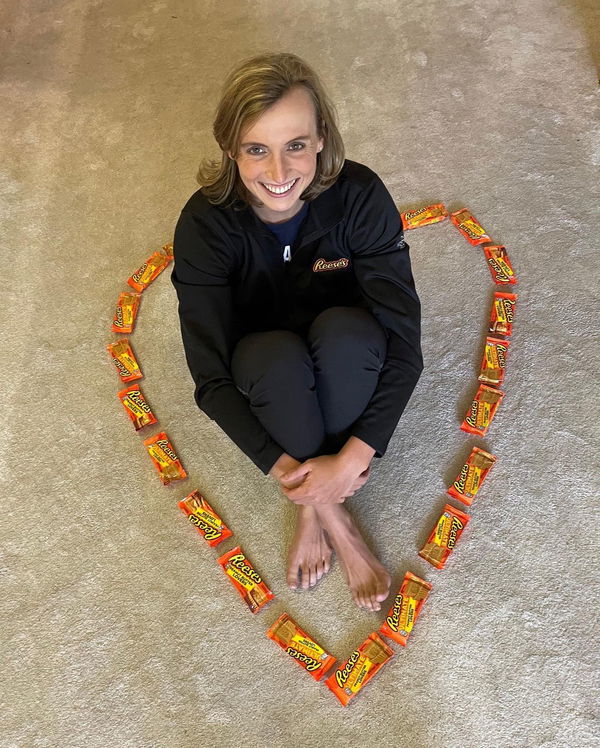
ADVERTISEMENT
Female swimmers often face the gale-force winds of low bone mineral density more than their male counterparts, making calcium another precious cargo. This nutrient is not just for strong bones but also aids in muscle function and overall recovery. Dairy products, fortified alternatives, and strength training shores provide the necessary reinforcement against potential skeletal storms. Finally, the world of supplements is like navigating the vast, often murky waters of the unknown. Many female athletes hesitate to drop anchor here, wary of bulking up or taking on unwanted calories. Yet, with the right map—such as targeted multivitamins and clean protein shakes—these supplements can be safe harbors, offering refuge in the form of essential nutrients and recovery support.
For female swimmers, mastering their nutritional needs isn’t just about swimming against the current; it’s about using the currents to their advantage, ensuring that each stroke takes them closer to their ultimate destination: optimal performance and health in the waters of competition.
In the shimmering wake of Katie Ledecky’s protein-rich regimen and Caeleb Dressel’s farm-to-table fare lies a profound revelation: the world of elite swimming demands far more than just disciplined training; it requires a meticulously tailored diet that respects the nuanced differences between male and female athletes. Ledecky’s iron-focused intake and Dressel’s balanced indulgences are not merely personal preferences but are emblematic of broader, gender-specific nutritional strategies. These strategies bolster their phenomenal aquatic performances, reflecting an evolutionary understanding of sports nutrition—one that champions personalized dietary frameworks to propel swimmers not just to the edge of their potential but beyond it, turning waves into victories.
ADVERTISEMENT
ADVERTISEMENT
ADVERTISEMENT
ADVERTISEMENT

